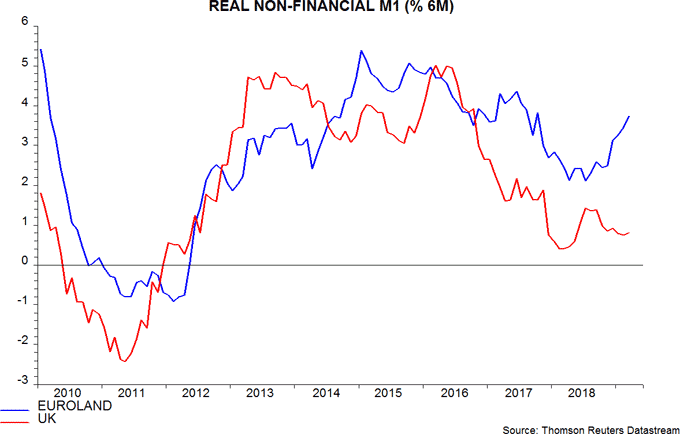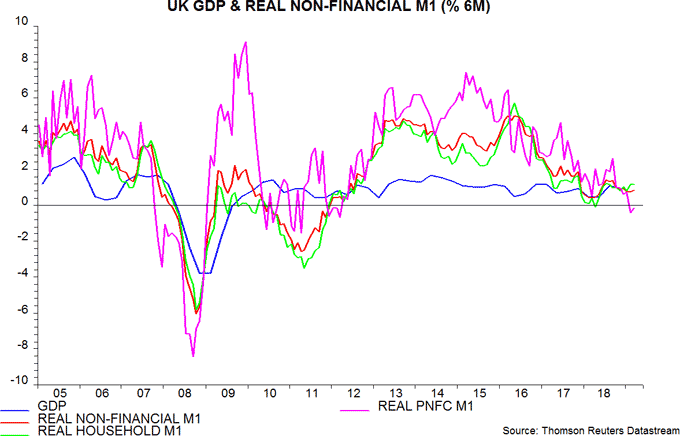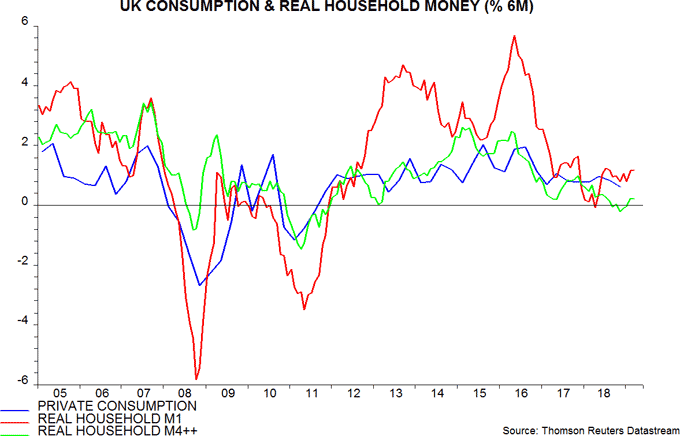
Janus Henderson: UK money trends still negative
Euroland monetary trends, as noted last week, suggest that the economic outlook is improving at the margin. UK trends, by contrast, appear to be signalling deteriorating prospects.
09.05.2019 | 13:57 Uhr
Six-month growth of UK real narrow money, as measured by non-financial M1 deflated by consumer prices, was little changed in March, at only 0.8%. Growth of the equivalent Euroland measure increased to 3.7%, resulting in the widest gap since 2010 – see first chart.
The recent stability of the UK series conceals worrying weakness in corporate narrow money: the six-month change in real M1 holdings of private non-financial corporations (PNFCs) was negative for a second month in March – second chart. This is consistent with a profits squeeze partly due to high unit labour cost growth and suggests a further investment cut-back along with weaker hiring. Euroland corporate real M1 growth, by contrast, has firmed recently – see previous post.
Household real M1 expansion looks respectable but has been supported by a savings shift out of mutual funds – retail outflows from such funds totalled £6.9 billion in the six months to March after a £6.4 billion inflow in the previous six months, according to the Investment Association. The third chart shows that a broad savings aggregate encompassing M4 holdings, National Savings and mutual funds ("M4++") is growing more slowly and has been better correlated with consumer spending in recent years. Household money trends often lag corporate developments as fluctuations in labour demand feed through to take-home pay.
A consumer slowdown coupled with a steeper fall in business investment and an end to pre-Brexit stockbuilding could result in a contraction of domestic demand over coming quarters. Avoidance of a recession could depend on a recovery in Euroland demand boosting net exports.







Diesen Beitrag teilen: